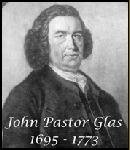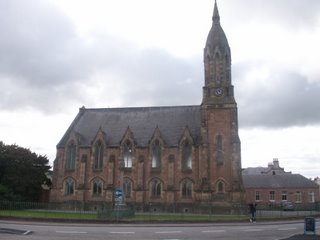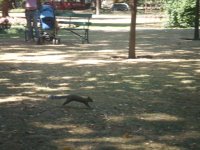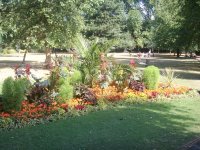 !"Never heard of Glas"
!"Never heard of Glas"John Glas (1696-1773) of Auchtermuchty was a person who sought the scriptures and at the time concluded that Christ's kingdom is one that is completely spiritual, and therefore as such should be independent of both state control or support. He was a minister from the age of 24 and was the fifth son of the manse. Although he did not want to leave the Church of Scotland he took up a new cause from the parish at Tealing near Dundee and started a new church known as the Glasite Church. Churches sprung up in Dundee, Perth and with the textile industry flourishing at the time further churches were set up in Paisley and Dunkeld. They as a Church were never large in number but their influence was great both national and international by the strong promoter John Glas's son in law Robert Sandeman.
The church was known for its "foot washing" and "holy kissing" and for its love feasts or communion celebrations that resembled banquets. The local name for the church was the "Kail Kirk". This communion was only administered by elders. As a Church they preferred "unlearned preachers".
SandemanianismThe basis of the Sandemanian Church lies with John Glas the minister of the Church of Scotland devoted to the Church but because of differing opinions at the time forced to leave and set up a church based on his new found principles.
Robert Sandeman who's family business based in Perth was bleachers of fabrics, (1718-1771) took up the leadership of the movement in the 1750s. He had business contacts in London which gave him the opportunities to write and speak in England. He married John Glas' Daughter Catherine.
The result was the son in law of Glas became the strongest and most wide spread promoter of Glas theology. The most famous Glasite from the past is Michael Faraday. The Sandemanian church through its elders demanded total obedience to their decisions from any or all of their congregation. This in the long term caused several splits and was the downfall of the Scotch Baptist Church who followed some of the principles.
The Sandemanian service was one of love and hope with singing of hymns yet unaccompanied at each meeting a roll call was taken and as well as the prayers and study of the word the preaching was taken by the elders. These services would take no account of the Christian calender in respect to Lent, Easter and Christmas.
Old Scots IndependentsJohn Smith, Newburn and Robert Ferrier, Largo having read the papers of Sandeman meet at Balchrstie mid point to their parishes to discuss the content. David Dale did likewise and set up a chapel of ease which in 1769 became an independent church with dale as one of the elders. Both these connections became known as Old Scots Independents- small, and sharing Glasite ideas of Church life and practice.





